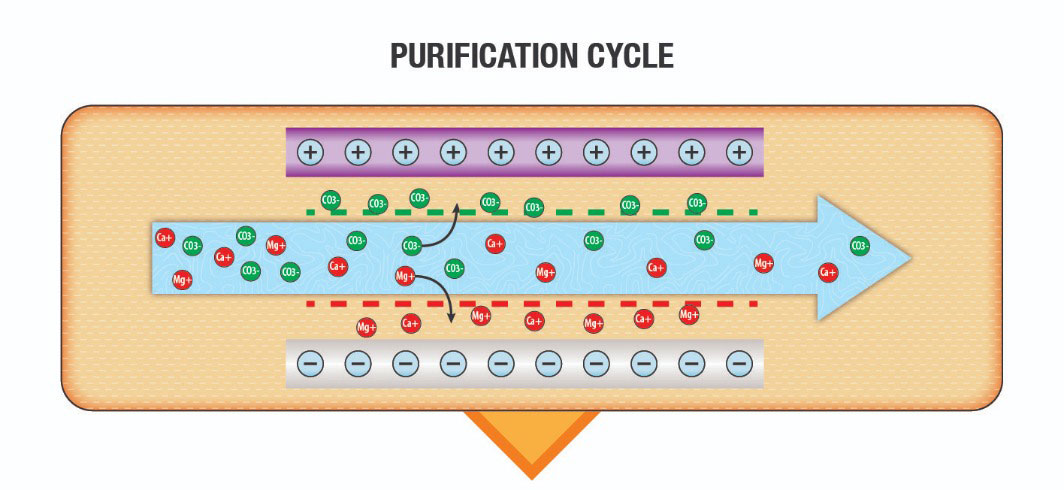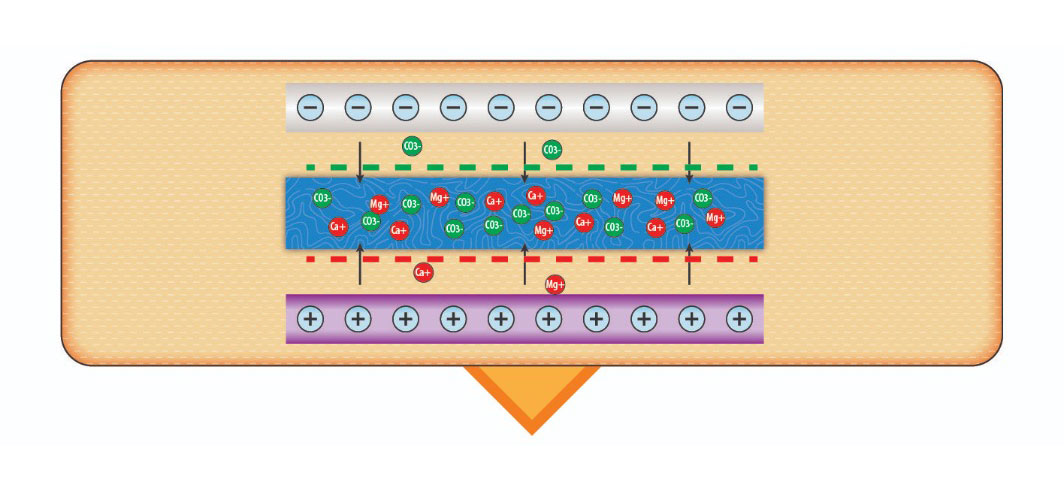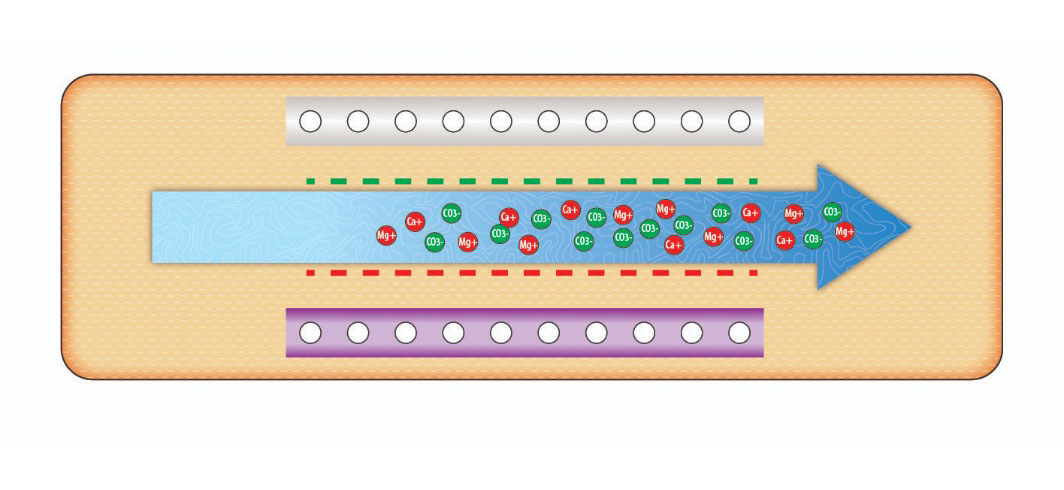1. Electrodes: LDI systems consist of two electrodes—a positively charged electrode called the anode and a negatively charged electrode called the cathode. These electrodes are typically made of a porous material such as activated carbon.
2. Flow of Water: The water to be purified is passed between these two electrodes. It can flow either in a single channel system or through multiple channels, depending on the design of the LDI system.
3. Ion Attraction: When a voltage is applied across the two electrodes, an electric field is created within the system. This electric field causes the ions in the water to migrate towards the oppositely charged electrodes.
4. Ion Adsorption: As the water passes through the LDI cell, the ions are attracted to and adsorbed onto the surface of the porous electrodes. Positively charged ions are attracted to the cathode, while negatively charged ions are attracted to the anode. The porous nature of the electrodes provides a large surface area for ion adsorption.
5. Deionized Water Collection: The ions are held in the porous electrodes until the electric potential is reversed or the ions are released through a regeneration process. The water that passes through the electrodes between the ions is deionized and collected as purified water.
6. Regeneration: Once the electrodes have reached their ion adsorption capacity, the electric potential is reversed, and the ions are released from the electrodes. This process is called regeneration. Regeneration can be achieved by momentarily short-circuiting the electrodes or by applying a voltage of opposite polarity.



By cycling between the ion adsorption and regeneration stages, LDI systems can continuously purify water. The removed ions remain trapped in the electrodes until the regeneration process, ensuring the continuous operation of the system.
LDI technology is particularly effective at removing dissolved ions from water, including common contaminants like salts, heavy metals, and other impurities. It offers advantages such as energy efficiency, reduced water waste, and relatively low maintenance compared to other water purification technologies.
Liqui-Deionization (LDI) technology outperforms traditional reverse osmosis (RO) water purifiers. While RO systems rely on a nano-sized pore membrane that can be limited by the size of ions, LDI offers a superior solution.
Here are a few ways in which LDI technology is better than RO water purification:
1. Energy Efficiency: LDI technology is more energy-efficient compared to RO. LDI systems work by applying an electrical potential across two electrodes, attracting and removing ions from the water. This process requires significantly less energy compared to the high-pressure pumps used in RO systems, which force water through a semipermeable membrane to remove impurities.
2. Reduced Water Waste: RO systems produce a significant amount of wastewater as a by-product of the purification process. For every gallon of purified water, an RO system can generate anywhere from 2 to 4 gallons of wastewater. On the other hand, LDI technology produces much lesser wastewater in comparison, since it operates without the need for pressure-driven filtration. This makes LDI a more environmentally friendly option.
3. Faster Operation: LDI technology typically works at a faster rate compared to RO systems. The time required for LDI to deionize water is often shorter, which means that LDI systems can have a higher flow rate and provide purified water more quickly.
4. No Membrane System: RO systems rely on semipermeable membranes that can become fouled or damaged over time due to the high pressure and impurities in the water. These membranes require regular maintenance and replacement. In LDI systems, there are no membranes involved, reducing the need for frequent maintenance and potentially resulting in a longer lifespan for the system.
5. Tunable TDS: One can experience the benefits of tunable Total Dissolved Solids (TDS) with LDI technology. Compared to traditional Reverse Osmosis (RO) systems, our innovative technology reduces the TDS levels in water by 50%. This ensures safe and healthy drinking water, free from excess dissolved solids.